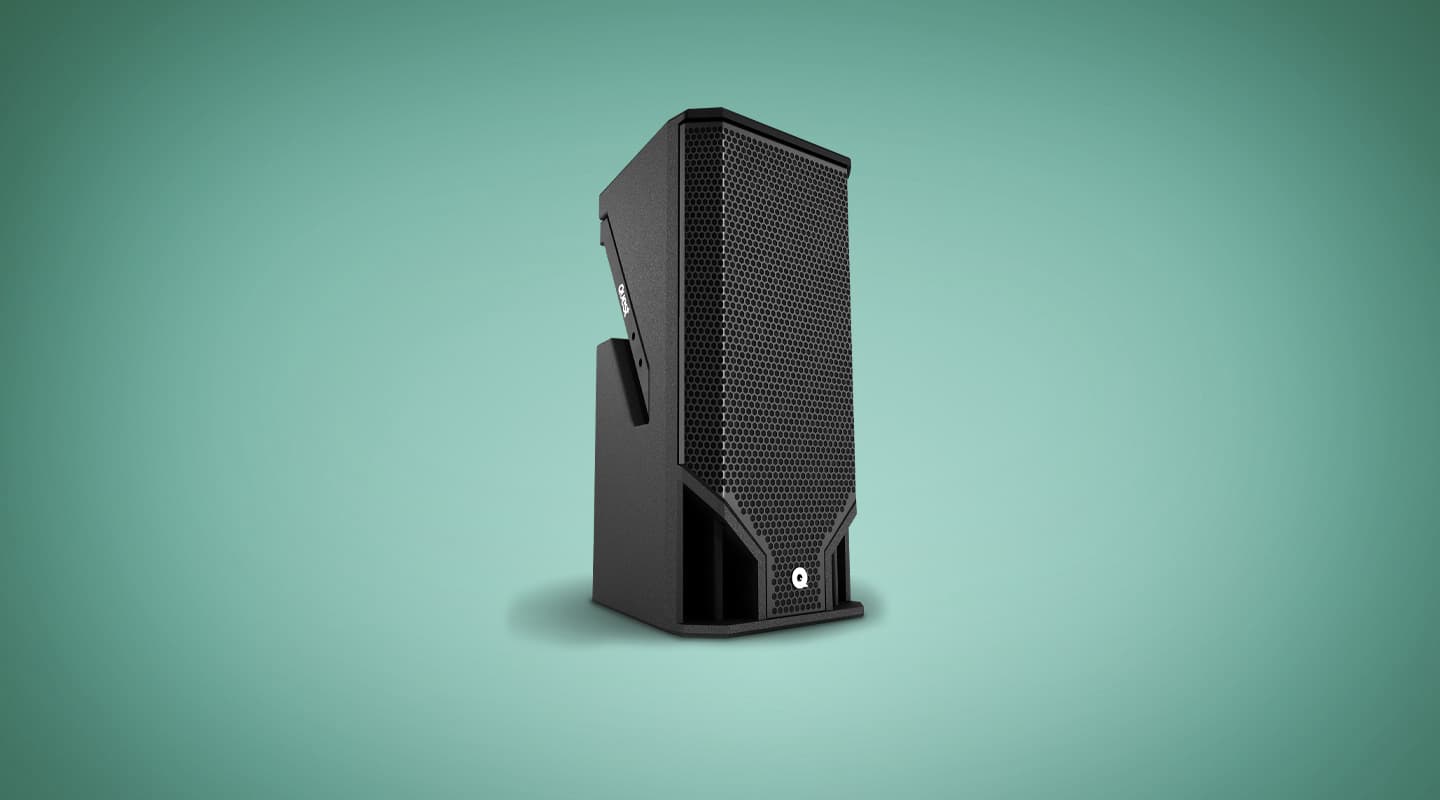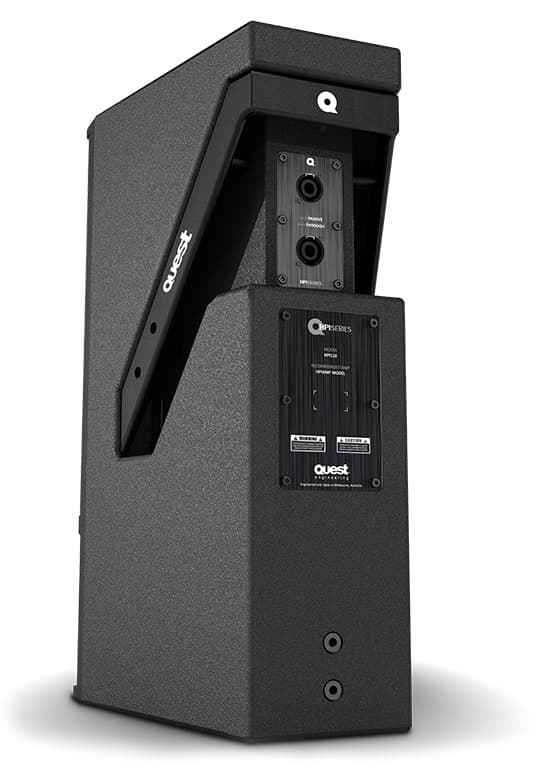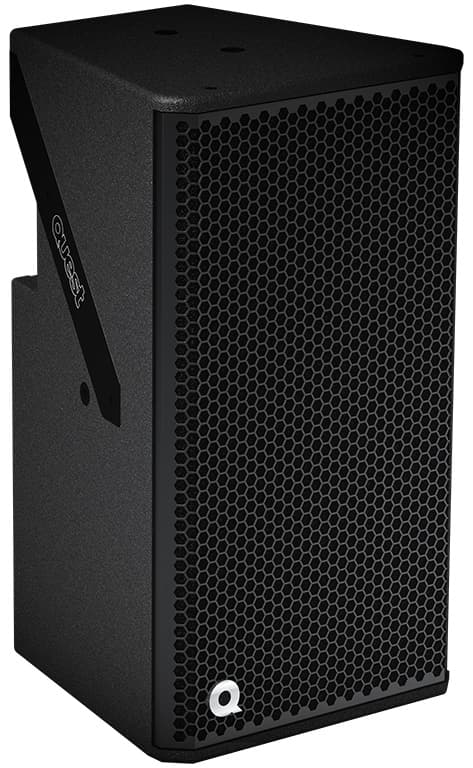
Review: Quest Engineering
Aussie brand Quest Engineering has a new range of passive speakers designed and assembled in suburban Melbourne that are serious for their size.
Quest Engineering is an Australian pro speaker and amplifier company that has traditionally been more of an export success than an Aussie mainstay. Until recently, Quest has sent its designs overseas for manufacturing, but Quest’s latest HPI series is designed, built, and tested in suburban Melbourne. Quest has embraced the homegrown ethos to the extent of using Lorantz drivers in its HPI subs that are manufactured from Eucalyptus pulp.
These days, Quest is bringing ‘overseas’ here. French electro-acoustic engineer ‘G’ has come onboard for the new and upcoming ranges, spending his time in and out of the anechoic cubbyhole at the back of the Group Technologies warehouse (Quest distributor). Quest has invested over half a million dollars in R&D, and a pair of 2-way passive speakers, the HPI 110 and HPI 8i are among the first trickles of what is shaping up to be a wave of all-new product. They are part of Quest’s new series of compact, full-range speakers targeted at portable live sound or installations where high sound quality is required.
ASYMETRICAL HORN
The HPI 110 can be used as stand-alone FOH or playback speakers, or multiple units can be used in a vertical array. They look like no other speakers I know and when they’re mounted on a stand and viewed from the three-quarter rear position they remind me of the creatures from the Alien movies. There’s a pole-mount hole on the bottom and at 16.5kg they’re fairly easy to get on a stand, but they are back heavy and it wouldn’t take much of a knock to make them topple over backwards…better to fall back than forward I suppose.
Recommended amplifier power is 480–720W for a maximum of 130dB SPL and the frequency response is quoted at 70Hz–18kHz ±3dB. It’s always a good sign when speaker manufacturers provide a frequency response graph. Quest has, and it confirms the commendably flat response, an achievement more noteworthy in an unprocessed speaker. Designed for mid-throw application with an emphasis on keeping the sound focused on the audience, the horn coverage ranges from 15 degrees up and 45 degrees down in the vertical plane. In the horizontal plane the asymmetrical flare design throws out at 30 degrees from the top of the flare and 45 degrees from the bottom. This effectively distributes the sound to a wider area close to the front of the cabinet while squeezing the sound out of a narrower opening on the top of the flare to give a longer throw.
QUALITY VOICE
In use, the HPI 110 speakers are straightforward and capable. They don’t require a processor and they will work well with any amp of suitable power. The voicing is very good with the mids forward, but an even frequency response without the hollowed-out quality of most DSP controlled, artificially voiced powered speakers. Speaking into the HPI 110 with an SM58 reveals a fast response, in-your-face sound with presence and plenty of mid-high detail. Up close and loud they’re very resistant to feedback but will eventually get glassy around 2–4kHz to let you know they will squeal if pushed further.
It’s once you start to move away from the speakers that you begin to notice the throw and how strong they sound at what seems like a long way for a smallish speaker. Indoors the low frequency response is good down to around 100Hz but drops off below that. Speaking into it right on the microphone lets the proximity effect fill out the low end nicely without boominess and straight out of the box these speakers would be ideal for any application that required loud, articulate vocals. For music playback they benefit from some added low-frequency EQ, if they’re not used with a sub, but this only works at low-medium levels. If the application requires medium or high levels of music playback then a sub will be needed. For live music FOH duties they would also normally be used with subs and there are three models available in the HPI range. The HPI 12S uses a single 12-inch woofer and is recommended for small venues, next up is the HPI 212S that has two 12-inch woofers and finally there’s the HPI 18LP with a single 18-inch speaker that will reach down to 38Hz. Interestingly, the woofers in the sub range are produced by Lorantz in Melbourne and as previously mentioned, the cones are made from specially selected paper pulp sourced from Eucalyptus trees.
NEED TO KNOW
Quest Engineering
HPI 110 & HPI 8i Speakers

LITTLE BROTHER
The HPI 8i is like a little brother to the 110 and shares its good looks. It features an 8-inch neodymium woofer and a 1-inch exit ferrite compression driver, again on a rotatable asymmetrical flare that throws both short and wide as well as long and narrow. Amp power is quoted at 400W, maximum level is 119dB and the frequency response is quoted at 75–20kHz ±3dB. Again a frequency response graph is provided and it’s also fairly flat although the quoted bass response seemed optimistic when listening with either a microphone or playback music. They’re fast, clear and loud but there’s not much sound below the vocal range so they’d need a sub for any music application above background level. Like the HPI110 the HP8i can be used as a single unit or as part of an array and the horn flare also rotates to accommodate vertical or horizontal mounting. Construction is similarly robust; the cabinet is reinforced birch ply and the perforated steel grille wraps around the sides of the cabinet. The main physical difference is the side cut-outs have been filled in by the steel insert so the only handle is at the top of the rear of the cabinet. It’s easy to grab and at 8.9kgs these are very easy to lift onto a stand, and they don’t have the back heaviness of the 110. The speaker leads connect to a Speakon NL4 socket and link located safely in a recessed section on the rear.
NOT FLAPPING ABOUT
In use they both sound great and they’re a handy size for a variety of applications. I used them on stands as sidefill when the band Flap came to play at Castlemaine recently. I had the 110 on one side and the 8i on the other and was impressed by the clear, punchy sound, easy volume and good throw. The 110 was more efficient, and stronger in the bass, but with the floor wedges turned off these things filled the stage with power to spare and they got a very positive reaction from the band. They are not the loudest band by any means but they have a full sound and like strong foldback. Even at very high levels, with no EQ over them, the HPI’s were reluctant to feedback. Their power belies their size and I reckon I could have run the whole stage sound with just the Quest speakers as sidefills.
The next night we had Cam Butler launching his latest album with a multimedia performance featuring video and surround sound based on his recorded orchestral album and live guitar playing. The Quest speakers were used, again on stands, as one half of the quad speaker setup while the house PA was the other half. Not only did they handle the wide dynamic range of the performance with ease but their focused point-and-shoot nature helped to define the directional characteristics of the performance resulting in an engrossingly trippy world of swirling sound.
NEXT IN THE FOLD
The HPI 8i’s are quite small at 449x250x250mm but look professional and provide any amount of clean sound; these would be ideal speakers for corporate functions or installations. Their great vocal projection and convenient size means they would also make ideal floor wedges for foldback use and this is one restriction the design has imposed. It’s common for small live speakers to have one or both sides angled so they can be placed on their side and throw sound back up at the performers but these really can’t be used in this way; the angle is so small and even if they were chocked up with something to get the angle right they don’t have any scratch protection on the sides. A foldback wedge based on the same design ideas and drivers would be a logical inclusion to the range.
The Quest HP Series speakers are passive so for some applications they won’t be as convenient as the common active designs but they are high-performance speakers that benefit from being driven by dedicated high-power amplifiers and they will out-perform active designs in medium to high volume applications. Processing is optional as they have a useable frequency response straight out of the box and even dynamic protection is probably optional as these speakers should provide sufficient volume without approaching their limits of operation. Recommended applications include FOH for live shows, churches, clubs, pubs, installs or any demanding corporate situations. Serious speakers for serious applications that come with a three-year warranty.

















RESPONSES